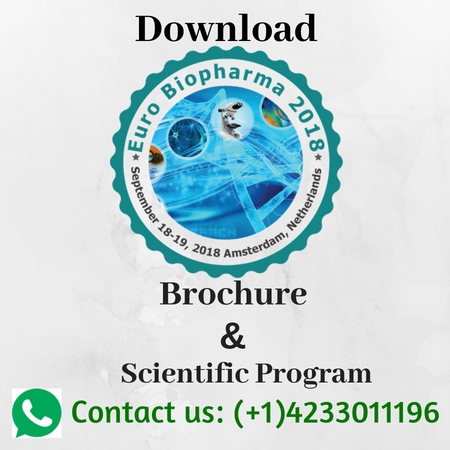
Alain L. Fymat
International Institute of Medicine and Science, California, U.S.A.
Title: Nanobiotechnology-based drugs for treatment of neurological disorders
Biography
Biography: Alain L. Fymat
Abstract
There are approximately 400 known neural disorders, some being due to a disruption or failure of the blood brain barrier (BBB) such as, e.g., meningitis, epilepsy, multiple sclerosis, prion and prion-like diseases (Parkinson's, Alzheimer's), HIV encephalitis, and systemic inflammation (sterile or infectious). As a consequence of the growing aging population, many such neurodegenerative diseases, cancer, and infections of the brain will become more prevalent. Unfortunately, the developmental process for new drugs has not kept pace with progress in molecular neuroscience because most of the new drugs discovered are unable to cross the BBB. This clinical failure may be largely attributed to a lack of appropriate drug delivery systems. Of interest here are those disorders requiring treatment by delivery of nanobiotechnology (NBT)-based drugs through the BBB - one of the most promising applications in clinical neuroscience. Nanoparticles, utilized as drug delivery agents, could potentially carry out multiple tasks in a predefined sequence. They can be effective careers in delivery of conventional drugs, recombinant proteins, vaccines, etc. The following nanotechnologies are available: liposomes, peptides, radiolabeled polyethylene glycol coated hexadecylcyanoacrylate nanospheres, Polyalkylcyanoacrylate or poly-lactic-co-glycolic acid (PLGA) nanoparticles with polysorbate 80 or poloxamer, and magneto-electric nanoparticles (MENs). Localized and controlled delivery of drugs at their desired sites of action is preferred because it reduces toxicity and increases treatment efficiency. I will discuss the various strategies that have been explored to increase drug delivery into the brain and their attending difficulties, with particular emphasis on NBT-based drug delivery systems.However, although the use of nanotechnology is expected to reduce the need for invasive procedures for delivery of therapeutics, some devices such as implanted catheters and reservoirs will still be needed. Further, there is some concern about the safety of nanoparticle entry in the brain and this needs to be resolved before human use.

